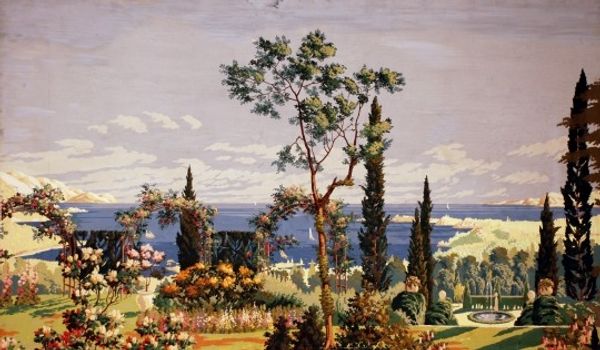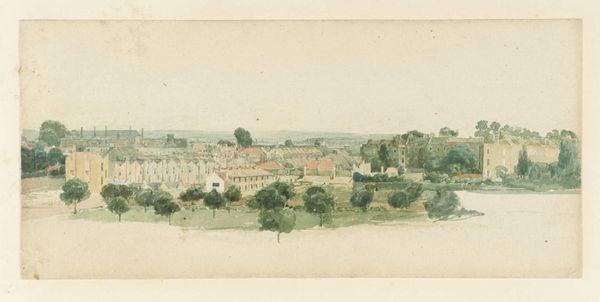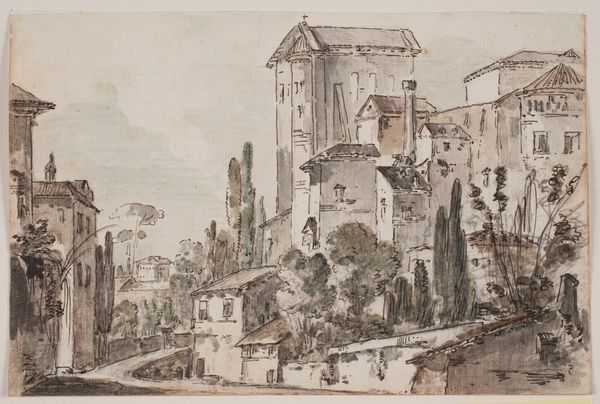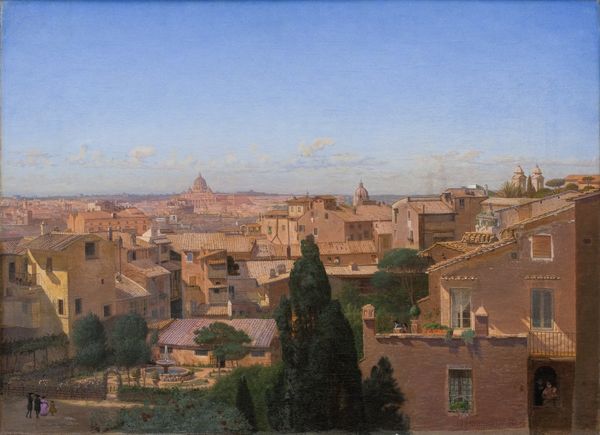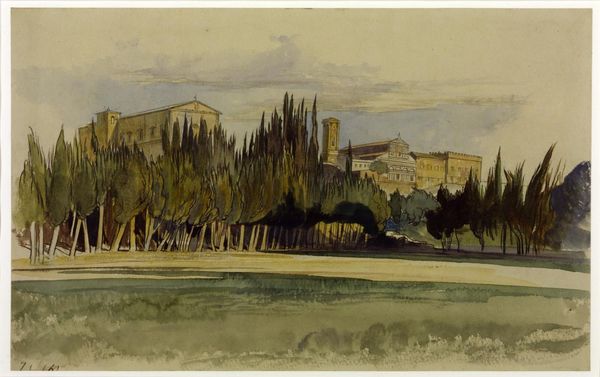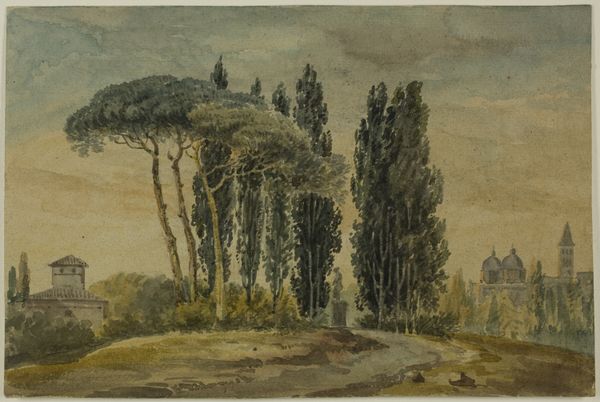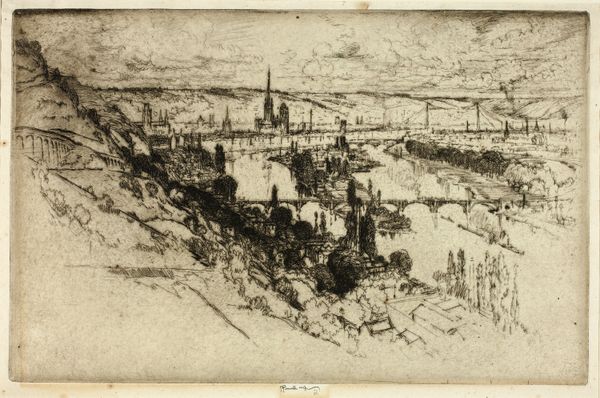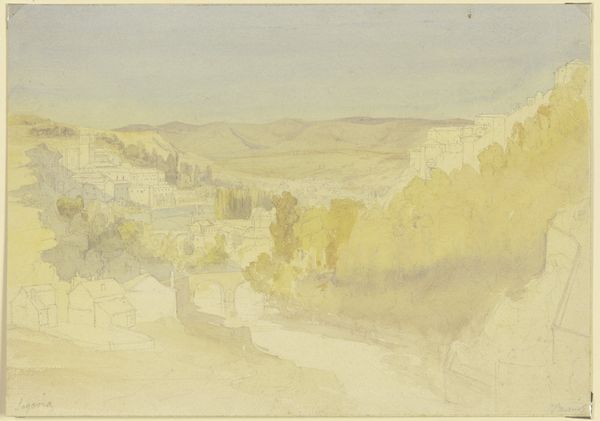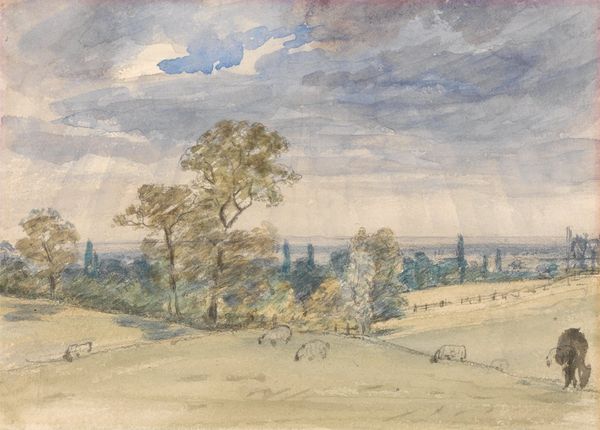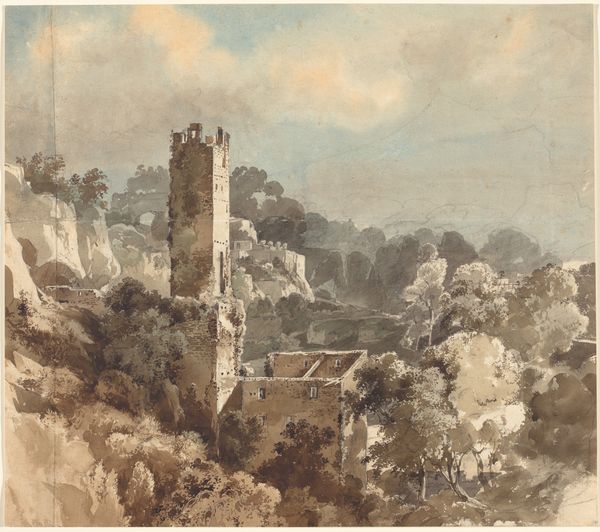
Dimensions: support: 99 x 175 mm
Copyright: CC-BY-NC-ND 4.0 DEED, Photo: Tate
Editor: This is Julia Emily Gordon's watercolor, "Pere Lachaise." The muted colors create a somber, yet strangely peaceful atmosphere. What do you see in this piece, particularly within its historical context? Curator: Gordon's choice to depict Père Lachaise, a space of both mourning and celebrity, speaks volumes about 19th-century societal attitudes towards death and remembrance. Consider the gaze: who is allowed to be remembered, and whose stories are erased or marginalized in these grand narratives of history? How does Gordon's perspective as a woman artist influence her rendering of this space? Editor: That’s a thought-provoking question. I hadn't considered the perspective of a woman artist shaping the narrative of remembrance. Curator: Indeed. The act of memorializing is often tied to power structures. By examining whose stories are visibly honored, and whose are absent, we can begin to unpack the complex politics of memory and representation. Editor: This makes me look at the painting in a new light, thinking about whose stories are told and whose are left out of history. Thanks. Curator: You're welcome. Art can challenge us to question these structures.
Comments
Join the conversation
Join millions of artists and users on Artera today and experience the ultimate creative platform.
tate 8 months ago
⋮
Julia Emily Gordon was an industrious, ambitious and talented amateur artist, like her mother Lady Gordon (née Julia Bennet). Julia Gordon is chiefly remembered as the daughter of Sir James Willoughby Gordon, a veteran of the Napoleonic Wars and, when a child, as one of several claimants to the honour of sitting on the Duke of Wellington’s knee at Brussels on the eve of the battle of Waterloo. Gallery label, February 2004
